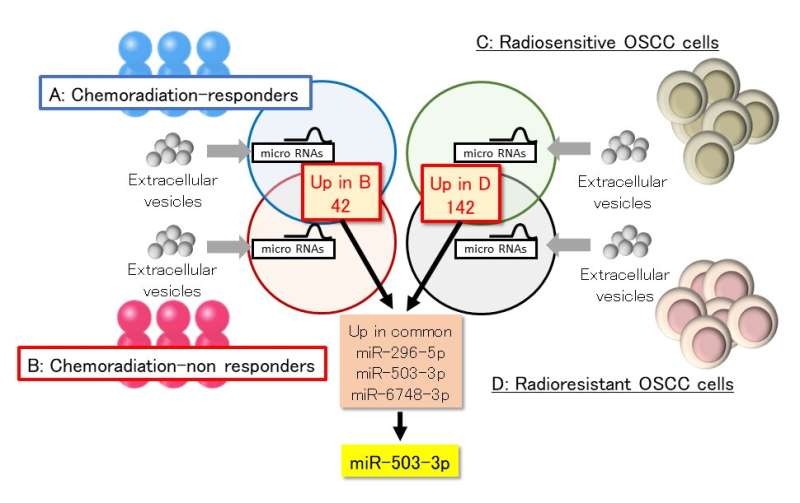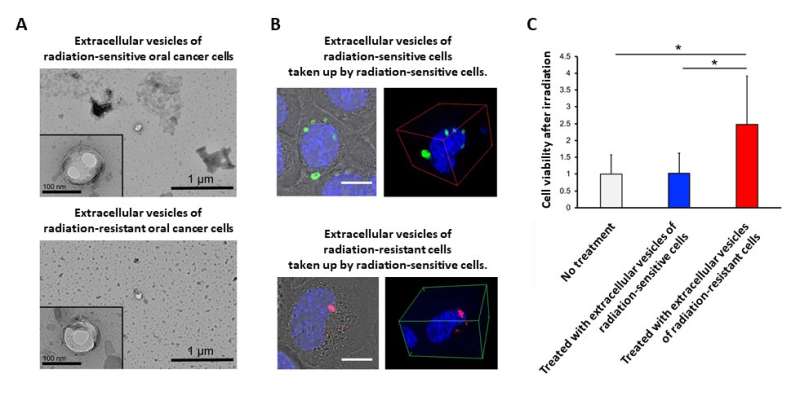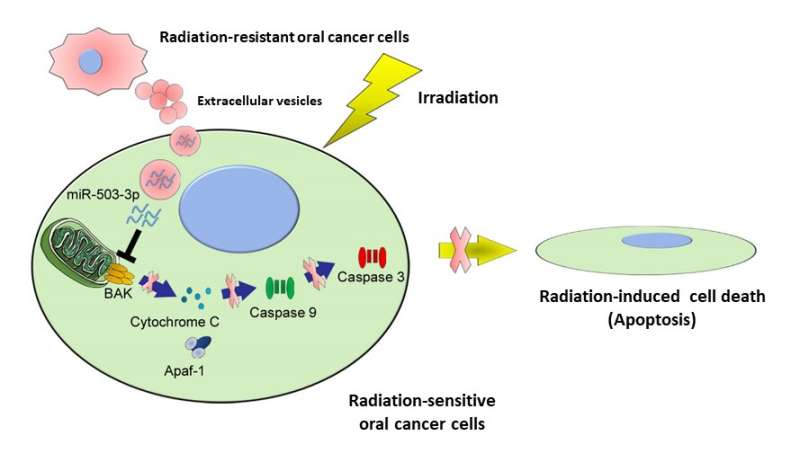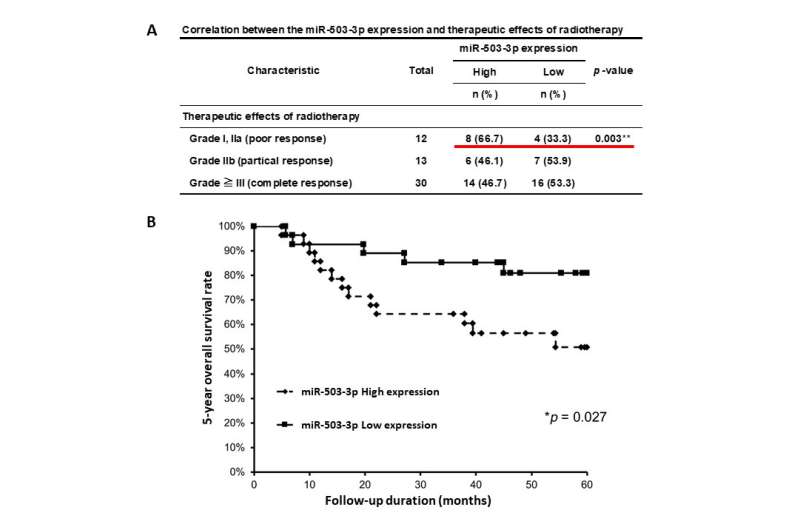How oral cancer acquires radioresistance

A research group led by Associate Professor Ryoji Yoshida and Professor Hideki Nakayama from the Department of Oral and Maxillofacial Surgery in Kumamoto University (Japan) has analyzed the extracellular vesicles (EVs) of radiation-resistant oral cancer cells and the microRNA contained within them, and discovered a new mechanism by which microRNA imparts radioresistance to surrounding radiation-sensitive oral cancer cells. The researchers believe that that their discovery may lead to the development of new diagnosis and treatment methods for radiation-resistant oral cancer.
Radiation therapy is the second most used treatment, after surgery, for oral cancer. However, some oral cancers are resistant to radiation therapy and may recur or worsen. The prognosis for patients with radiation resistant oral cancer is poor.
Cancer cells are believed to acquire radiation treatment resistance by "talking to each other" using a form of cell-to-cell communication to share various information. The focus of most research has been on EVs, which are released outside the cell, as the cellular communications toolbox because they contain a large amount of information in the form of genes and proteins. Furthermore, little research has been done on the relationship between EVs and oral cancer radiotherapy resistance.
In what they believe to be a world first, the Yoshida & Nakayama research group successfully isolated EVs released from radiation-resistant oral cancer cells. These EVs were then added to radiation-sensitive oral cancer cells which revealed that radioresistance was acquired by radiation-sensitive cancer cells through the transfer of microRNA, one of the pieces of information contained within the EV toolbox. The microRNA (miR-503-3p) is able to suppress apoptosis (cell death) after irradiation, thereby making the formally radiation-sensitive cells radioresistant. The researchers believe that this mechanism highly contributes to the establishment of radioresistant oral cancer within the body.

Additionally, oral cancer patients with high expression levels of the miR-503-3p microRNA in their blood had poorer treatment effects and a worse prognosis. In other words, the researchers found that the amount of microRNA in the blood may predict both the therapeutic effect and the prognosis of radiotherapy in oral cancer patients.

On uncovering this new mechanism for radiation resistance acquisition by oral cancer, Professor Nakayama said, "Our research may lead to the development of new diagnostic and therapeutic methods for this type of cancer. We hope to soon begin animal experiments with the goal of developing a therapeutic strategy that targets the EVs secreted by radioresistant oral cancer."

This research was published online on 11 December 2021 in the Journal of Extracellular Vesicles.
More information: Keisuke Yamana et al, Extracellular vesicles derived from radioresistant oral squamous cell carcinoma cells contribute to the acquisition of radioresistance via the miR‐503‐3p‐BAK axis, Journal of Extracellular Vesicles (2021). DOI: 10.1002/jev2.12169



















